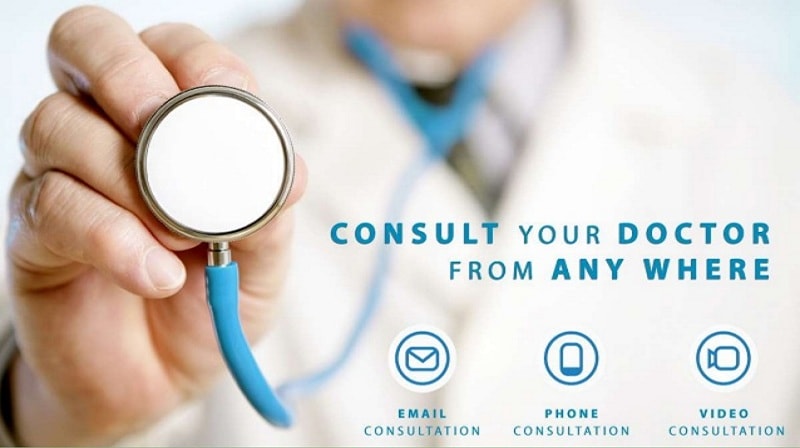According to medical experts, these are the best ways an average person can save on healthcare costs.
Evaluate your current insurance plan
Are you getting the most out of your insurance plan? Your plan determines the cost of many of your healthcare bills. Make sure you study your plan and know what your current plan covers (and what isn’t).
This means taking the time to understand what the copay and/or coinsurance costs are, how large the deductible is, and which providers, facilities, or hospitals are part of the network. And don’t forget to familiarize yourself with the medication schedule associated with your plan. You can work with your doctor to change prescriptions to fall within a lower price range of your specific coverage.
If your current plan doesn’t meet your current health needs, consider changing your coverage. Regardless of whether your plan is private, employer, or state-sponsored, you may have other options available that better suit your personal needs.
Use programs to save prescriptions
Sign up for a pharmacy savings card.
Pharmacy Savings Cards are free services that offer significant discounts on drug prices at the pharmacy counter. Programs like Single Care allow you to search for your prescription to find the lowest prices in pharmacies near you. All you have to do is show your card to the pharmacist to get immediate savings on your prescriptions. Additionally, some pharmacies like Walgreens and Walmart have prescription savings programs that all customers can enjoy.
Ask for generic drugs when applicable.
Don’t assume that doctors or pharmacists will automatically prescribe the cheapest treatment available. Doctors often prescribe the brand-name drugs they are most familiar with. Generic drugs, however, are as effective as brand-name drugs and cost 80% -85% less on average. Always ask your pharmacist if there is an equally effective and less expensive generic alternative to your prescription.
Switch to mail-order prescriptions.
If you regularly take the same medication or medications, you can save money by filling your Rx with a mail-order pharmacy. Mail-order pharmacies allow you to fill your prescriptions in bulk, delivering you 90-day stock instead of 30-day stock, often at a discount.
Always shop around
The best thing you can do for any high healthcare cost is to explore your options. Many people don’t realize that the same procedure can cost tens of thousands more in one hospital or facility than another, or if performed by one doctor over another. For scheduled procedures or surgeries, patients can call hospitals in advance to request billing quotes. Many insurance plans allow you to search for providers on the net before making an appointment.
If you want to keep your current provider, it’s worth asking if they can provide cheaper care in a different location. Some doctors practice in multiple facilities, which may bill differently for many of the same services. Depending on your health plan, your doctor may be able to provide certain services, such as vaccines, procedures, or tests for a lower cost at another facility. It is always worth asking your doctor if your treatment would cost less at another treatment site.
Avoid unnecessary expenses
Be honest with yourself about the potential financial challenges you may face by adhering to a treatment plan or filling out a prescription. Identifying your financial limits will help you narrow down the right questions to ask your insurance plan and your doctor about finding low-cost options. Finally, ask yourself if you really need the test, prescription, or recommended procedure. Find out if there is a less expensive alternative option that can work for you.
Don’t be afraid to negotiate prices
It may not seem like it, but many large hospital bills are negotiable. Many hospitals offer waivers, cash discounts, or rescue plans. Be sure to call the billing department and ask if discounts are available or if they can sway the associated fees. The billing department will also be able to provide information on setting up an interest-free payment plan.
Take advantage of free resources
Community clinics may offer some health screenings for free or on a sliding scale, and many large expenses have programs that allow you to get treatment at no cost.
Preventive Services: If you have insurance coverage, many cover a free annual checkup, such as an annual physical exam or exam for healthy women, no copay is required. Check with your plan to see if you can take advantage of this benefit.
Insulin: The American Diabetes Association estimates that 34.2 million Americans are living with diabetes. As the price of insulin continues to rise, it’s no wonder that so many people living with diabetes are struggling to pay for treatment. In recent years, however, pharmacy manufacturers have developed programs that provide free or discounted insulin. Many pharmacy manufacturers offer insulin assistance programs. In addition to these programs, discounted drug cards, such as Single Care, can also help people with diabetes find the pharmacy that offers the cheapest prices for their insulin prescriptions.
Sign up for an HSA or an FSA
If you have health insurance, a plan with an HSA (Health Savings Account) or FSA (Flexible Spending Account) can help you save on out-of-pocket medical bills. Both accounts allow you to contribute a portion of your pre-tax income, which can be used to pay for qualified medical bills, including copays, coinsurance, prescriptions, and more.
Get proper care
When you’re not feeling well, it’s interesting to go to the first care facility that has an available appointment. However, not all provider options cost the same. Ask yourself: do you need to visit an emergency room or can you wait for an appointment with a network operator? These options have very different costs and can save you hundreds of dollars, depending on the problem you face.
If your insurance covers it, see if you can see a doctor over the phone or via a telemedicine appointment instead of an in-person visit. For those who qualify, telemedicine appointments can produce significant savings over time.
Be sure to check your insurance coverage and speak with your provider to determine what works best for you.
Review your invoices (and appeal errors)
Second healthy consumer, there are some basic steps you should take every time you receive a large medical bill. First, make sure you get a detailed receipt. Each product must be listed separately with the costs associated with each item broken down. Compare these procedures and their costs with your health insurance’s explanation of benefits (EOBs) to make sure there are no discrepancies. If you find a mistake, be sure to call your insurance company and file an appeal. If you have any questions about why you were charged for a certain procedure, drug, or test, it’s always a good idea to call the doctor who billed you and ask. Keep all receipts and proof of payment to make appeals as simple as possible.
Practice preventive care
One of the best things you can do to limit long-term health care costs is to establish a daily health and wellness routine that works for you. I think of good nutrition, regular exercise, and stress management as the three legs of a tripod that help stabilize a person’s well-being, says Julie Cunningham, a registered dietitian, and specialist in diabetes care and education based in the North. Carolina. If you miss one or the other, your tripod will tip over. When you have all three, your health has a really solid foundation. Staying hydrated, going for a daily walk, quitting smoking, drinking less alcohol, or making healthy dietary changes can have a significant impact on your future health and prevent future costs.





